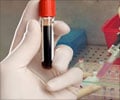AIDS research workshop this week will have world scientists working on HIV persistence in viral reservoirs meeting between December 6 and 9 to find a cure for HIV/AIDS as soon as possible.

More than 210 international scientists meet Tuesday 6 December for the "International Workshop on HIV Persistence, Reservoirs & Eradication Strategies". The workshop is supported by the American National Institute of Health (NIH) and the French Agency for AIDS Research (ANRS).
"We are very excited by the fact that all top scientists involved in the quest of an HIV cure will be there" declared Doctor Alain Lafeuillade (Toulon, France) cofounder of the workshop with Professor Mario Stevenson (Miami, USA).
The workshop will begin on Tuesday 6 December by a satellite symposium entitled "Unique Challenges and Opportunities for Eradication of Brain HIV-1 Reservoirs" organized by the National Institute of Mental Health (NIMH). In the following days, sessions will discus the animal models of HIV persistence, the virological and immunological factors at play, and the development of new therapeutic strategies to reach a functional or a sterilizing HIV cure.
"It is a unique program, involving researchers from America, Europe and Australia, and the abstracts we have received show that the field is moving quickly" Doctor Lafeuillade mentioned. The workshop will combine state-of-the-art lectures and more than 60 presentations of yet unpublished data as oral or poster publications. Embargo on these data will be lifted on December 6.
Several NIH representatives will attend the workshop, as well as members of the "Towards an HIV Cure" initiative from the International AIDS Society (IAS). The IAS will convene their group twice during the workshop to prepare the scientific strategy towards an HIV cure to be launched in Washington in July 2012.
"With the case of the Berlin patient we now know that an HIV cure is achievable, but we have to find strategies which are scalable" Doctor Lafeuillade added.
The Berlin patient was declared cured from HIV a year ago after receiving 2 bone marrow transplants for acute leukemia. The bone marrow donor exhibited a rare defect on the CCR5 coreceptor that HIV uses to enter cells. Researchers working in the USA on "zinc finger nucleases" to mimic the CCR5 defect will detail their latest advances at the workshop.
Another approach to a cure is purging residual HIV reservoirs with drugs capable of acting on latently-infected cells. Trials have already started with Histone Deacetylase inhibitors, disulfiram and bryostatin. Their preliminary results will also be published at the workshop.
But the workshop is not all about therapy and basic science will represent an important part of it. "It is still necessary to increase our understanding of the mechanisms involved in the maintenance of HIV reservoirs during effective antiretroviral therapy" Dr. Lafeuillade said, "That is why the NIH and the NIAID recently awarded $14 million/year for research on eradication of HIV through the Martin Delaney Collaboratory".
The "International Workshop on HIV Persistence, Reservoirs & Eradication Strategies" is held at the Westin Sin Maarten Hotel, Philipsburg, December 6-9, 2011. It is a closed meeting where participants are selected for their committment in HIV persistence research.
Source-Medindia















